Sea gulls love In-N-Out. But their diet may be changing their Channel Islands home
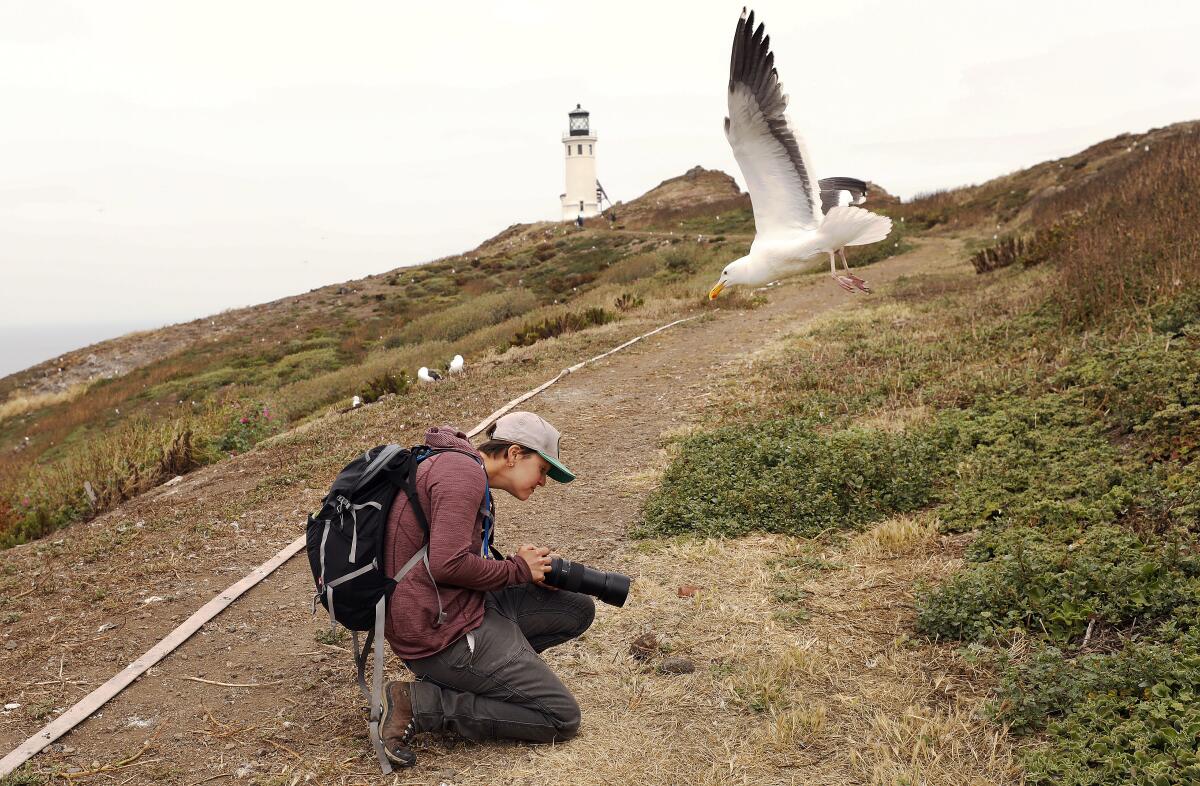
Thirty minutes after setting sail for the Channel Islands National Park, Ana Sofia Guerra spotted a creamy white sea gull soaring majestically against the slate gray sky.
The other passengers on the 64-foot catamaran were captivated by a pod of dolphins leaping playfully from the water, but Guerra kept her eyes trained on the solitary gull.
The ecologist pointed a large camera skyward and snapped a picture of the seabird gliding on the strong ocean breeze. Then a smile spread across her face.
“It’s probably heading back from a trip to McDonald’s,” she said.
For the last few years, Guerra has been studying the eating habits of western gulls that nest on Anacapa and Santa Barbara islands in the Channel Islands archipelago.
She’s tracked sea gulls on ventures from their pristine island home to an In-N-Out in El Segundo, a catering kitchen in Compton and the Roadium Open Air Market in Torrance.
On one trip, a bird she monitored flew to a row of Vietnamese restaurants in Anaheim, then visited a bakery a few blocks away for dessert.
In their natural habitat, gulls primarily eat squid, anchovies, crabs, barnacles and other marine life. But when it comes to people food, they are willing to try just about anything.
“There was a gull on Santa Barbara Island that vomited an entire corn dog with a stick,” Guerra said.
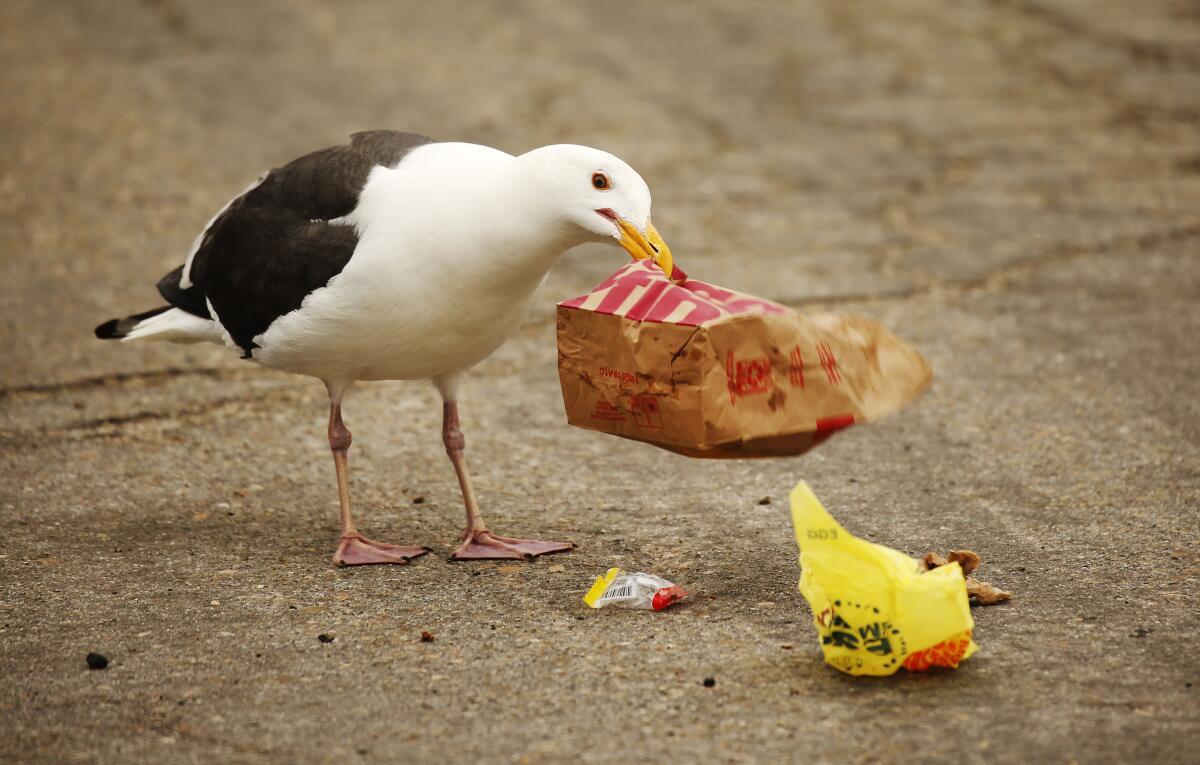
Usually it’s humans who are responsible for polluting natural ecosystems. But on Anacapa and Santa Barbara islands, gulls appear to be the ones spoiling the wild habitat with processed food and puked-up trash.
Guerra hopes her research will reveal whether, and how, the birds’ unnatural eating behaviors are affecting the other plants and animals that share their island home.
“We know how important the Channel Islands are to the birds as a nesting habitat,” she said. “What we don’t know is how important the birds are for the islands.”
::
Guerra is tall, with an easygoing attitude and a shark tattoo on her wrist. Born in the landlocked city of Monterrey, Mexico, she fell in love with the ocean while growing up in Sao Paulo, Brazil. She’s an experienced diver and has served as a naturalist on eco-tourism expeditions to Alaska. Now she’s working on a doctorate in marine ecology at UC Santa Barbara.
She first visited Anacapa in 2016 while working as a technician in the lab of community ecologist Hillary Young at UC Santa Barbara. While tagging birds on the island, Guerra noticed two things that piqued her curiosity.
First: In addition to regurgitating undigested squid beaks and fish bones, the birds were coughing up packets of ketchup and ranch dressing, banana leaves that once encased tamales, and an assortment of chicken bones — all which suggested they were scavenging at restaurants and dumpsters.
And second: The 700-acre island was covered in an abundance of white bird droppings.
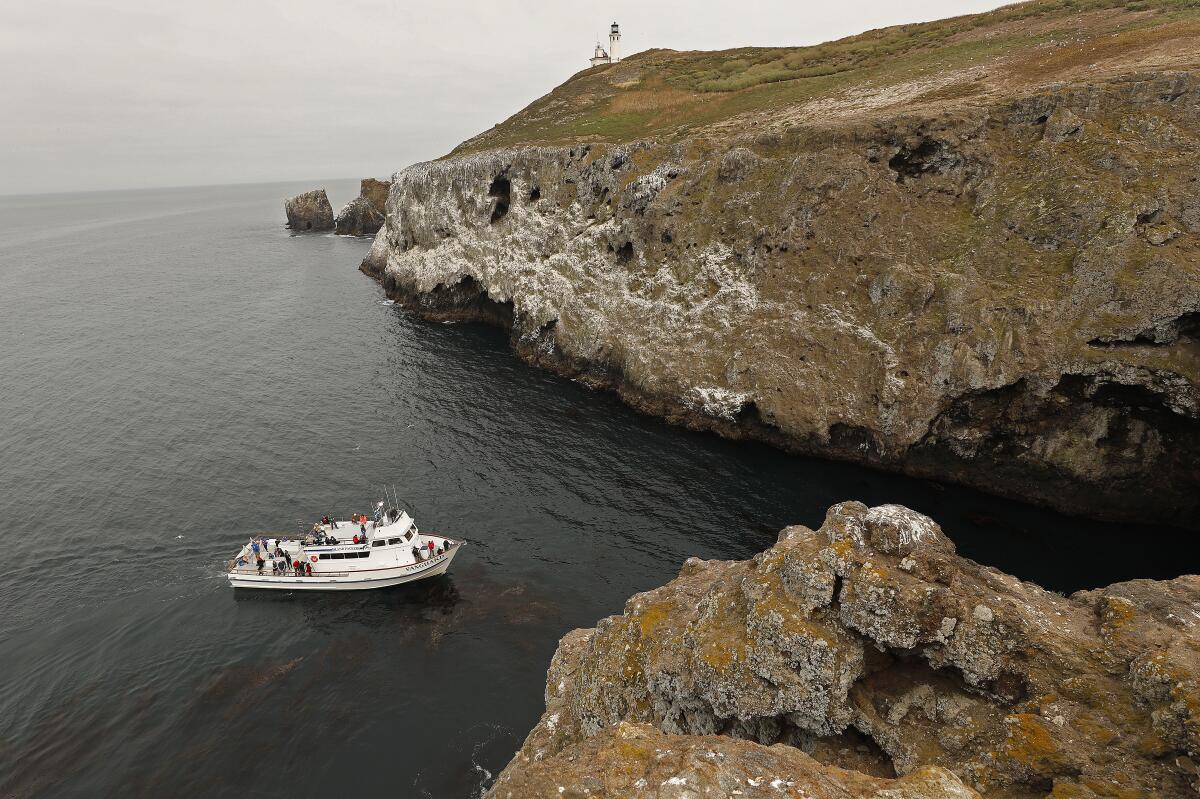
These observations led Guerra to wonder just how much “people food” the gulls were eating — and whether their diet was changing the very chemistry of the Channel Islands.
“I moved the project in the poop direction,” she said.
Seabirds, and their poop, play an important role in island ecosystems by moving nutrients from the mainland and the ocean to the island shores, said Young, who is advising Guerra on her research. It stands to reason that the gulls’ penchant for human junk food could ripple throughout the food chain.
“Based on what we know from other systems, this might have large-scale transformative impacts,” Young said.
Previous work has shown that the nutrient quality of a gull’s guano can vary greatly depending on its diet. For example, European herring gulls that feast on landfills can have up to eight times more nitrogen in their poop than wild-feeding birds of the same species, while the wild-feeding birds excrete about twice as much phosphorus.
Guerra hopes to determine how much western gull guano is being incorporated into the soil on both Anacapa and Santa Barbara Island. She also wants to know if its chemical fingerprint is showing up in the islands’ plants.
“The question is, are the island plants thriving because they get this constant nutrient load from the gulls?” she said. “And is the gulls’ diet helping or hurting them?”
::
Together, the Santa Barbara and Anacapa islands provide a nesting habitat for more than a quarter of the world’s estimated 80,000 western gulls. (The other six islands in the national park are inhabited by island foxes, which prohibits large colonies of birds from nesting on them.)
The gulls flock to the islands each spring to build their nests on the ground, scraping away plants and debris before assembling doughnut-shaped structures made of dried grasses. The nests aren’t much to look at, but they are effective at blocking the wind, protecting the eggs inside.
The birds generally lay two or three brown speckled eggs around May, and males and females take turns sitting on them while their partners look for food. The chicks hatch about one month later — small and fluffy with a gray pattern that resembles leopard print. Adults take care of their chicks for up to six months. The young birds and their parents leave their island home for the fall and winter months, returning again the following spring.
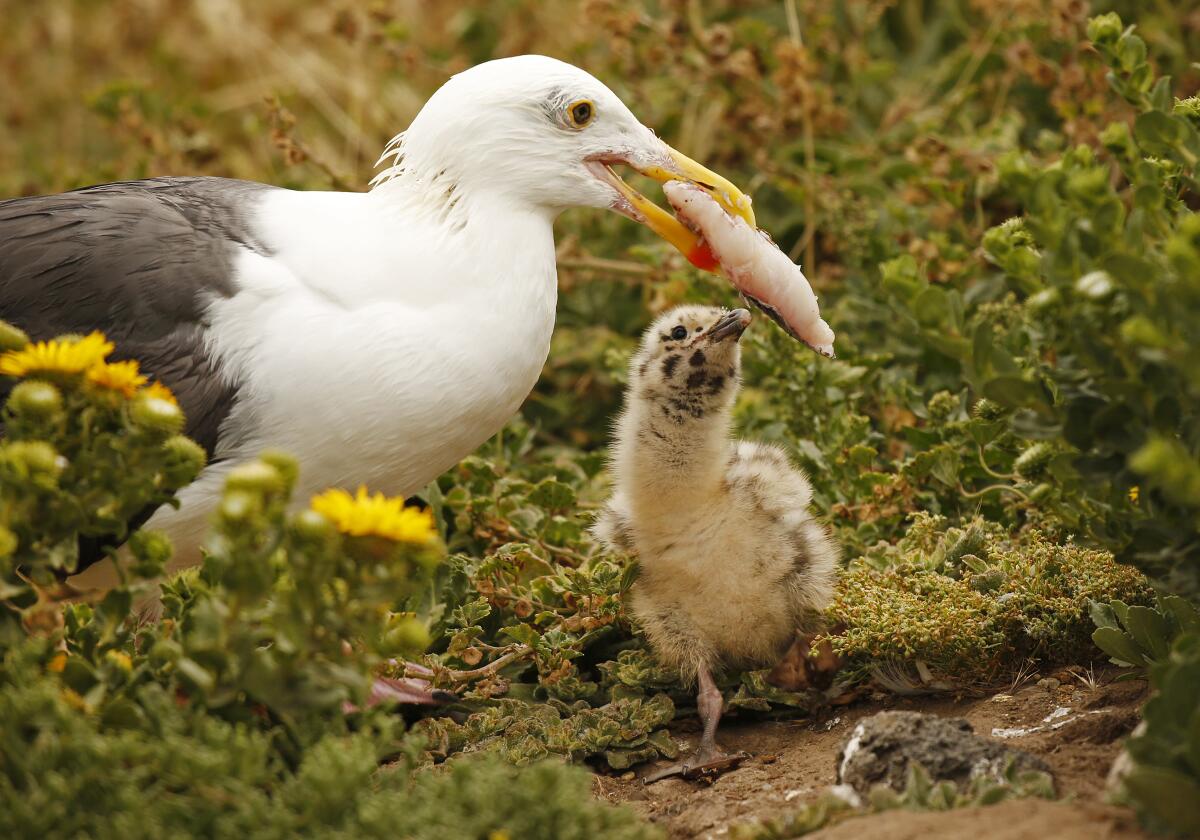
In the summer months, Anacapa is a cacophonous sea of about 10,000 squawking gulls guarding their territory and chirping chicks hungry for their next meal. Seeing so many gulls all in one spot gives many island visitors a new appreciation for a bird frequently seen as a nuisance.
“Most people think of them as trash-eaters and food-stealers who annoy you at the beach,“ Guerra said. “But then you come to Anacapa and realize, no, this is wildlife.”
It’s not everyone’s cup of tea, however. Judy Oberlander, a volunteer naturalist at the park, recalled the time a tourist with a bird phobia made the mistake of visiting the island.
“She had a total breakdown,” she said.
To track where the nesting western gulls were getting their food, Guerra outfitted dozens of birds with inexpensive GPS trackers in the early spring, just as they were arriving at the island for the nesting season.
Working with a partner, she waterproofed the trackers by wrapping each one in a condom, and then affixed them to the three middle tail feathers of the avian test subjects using cloth tape. Tagged birds were marked with a Sharpie on their chests so they could easily be found again when it was time to collect the trackers.
Trapping gulls is trickier than you might imagine, said An Bui, a marine ecology graduate student at UCSB who spent three weeks tagging birds with Guerra in 2016.
“The first time, you can use a pretty obvious sort of trap which looks like a net that you put around the nest, but the second time it has to be a bit more subtle,” she said. “They figure out the methods you use to catch them.”
Guerra said the work gave her a new respect for the birds.
“I’ve been outsmarted by a gull more times than I care to admit,” she said.
The trackers had enough battery life to record a bird’s movements for up to five days, or about three to five foraging trips per bird. Guerra was able to retrieve 25 trackers from Anacapa birds and 26 from those on Santa Barbara.
The data revealed that 40% of the trips from Anacapa took the birds so far inland that they couldn’t possibly be eating their natural diet of squid, crabs and small fish. The same was true of roughly 6% of the trips made from Santa Barbara Island.
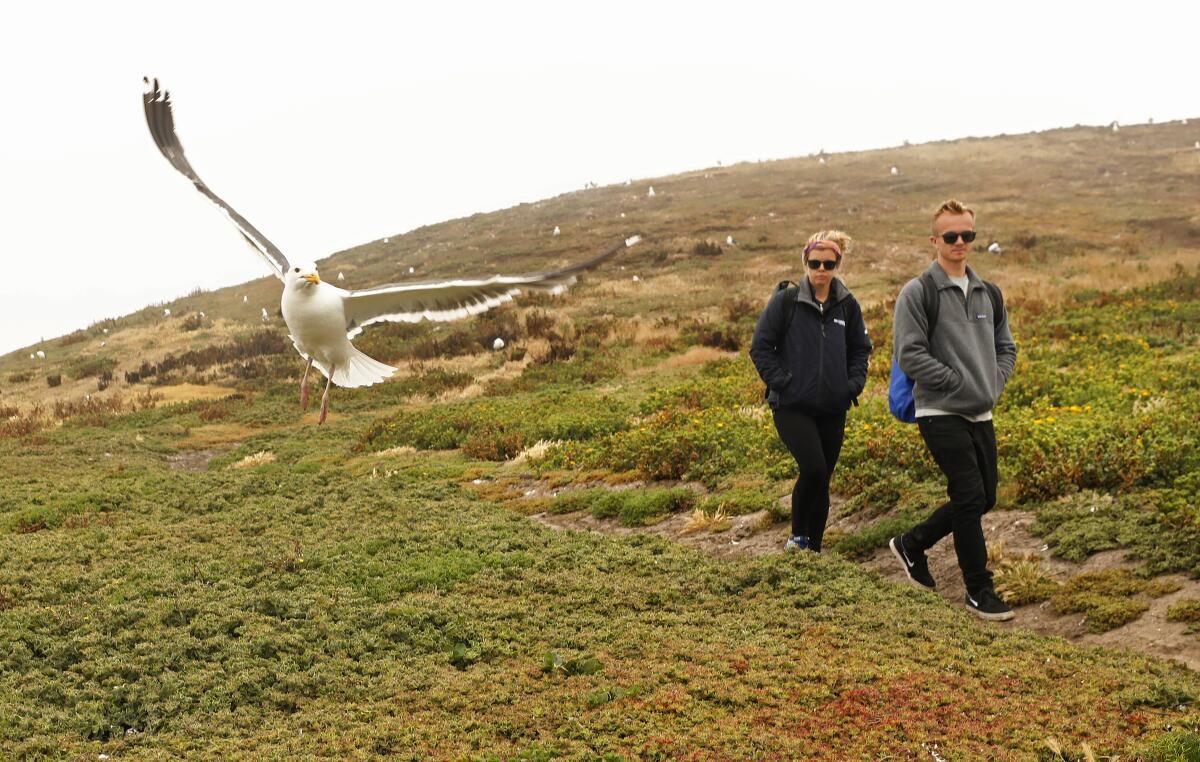
One reason for the disparity could be that Anacapa is just 14 miles to the mainland, while Santa Barbara is 38 miles away. The extra energy that the Santa Barbara birds would have to expend to reach inland restaurants and dumpsters may not be worth it, Guerra said. For these birds, it might simply be easier to land on the ocean surface and hunt for pelagic red crabs.
“I’m assuming that’s true,” she said. “It’s not like I was able to interview the birds.”
The trackers recorded their location once every minute. That would make it possible for Guerra to pinpoint the restaurants the birds visited, and to tell whether the gulls frequented the same places over and over.
::
On a late-summer afternoon on Anacapa, Guerra bent down on one knee while squawking sea gulls flew overhead. She scooped up two soil samples with a small trowel, scraping the top layer into a Ziploc bag before digging deeper to collect more dirt two to four inches down.
It was the second time she had gathered soil from this spot. The first was in April, just as the birds arrived to build their nests.
Guerra will send these and other samples to a lab that will measure the phosphorous, nitrogen and salt content. She will compare the results from Anacapa with those from Santa Barbara to see how their chemistry differs, and also look for differences between samples collected before and after the birds’ arrival.
At this stage in her research, she can’t predict what she will find.
“The composition of gull poop might matter to the islands a lot, or not at all,” she said.
Alexander Waite, an ecologist at Missouri State who studies how seabird guano alters soil chemistry on island habitats, says that when large groups of seabirds assemble in one place, their vast amounts of excrement can alter the chemical composition of their environment.
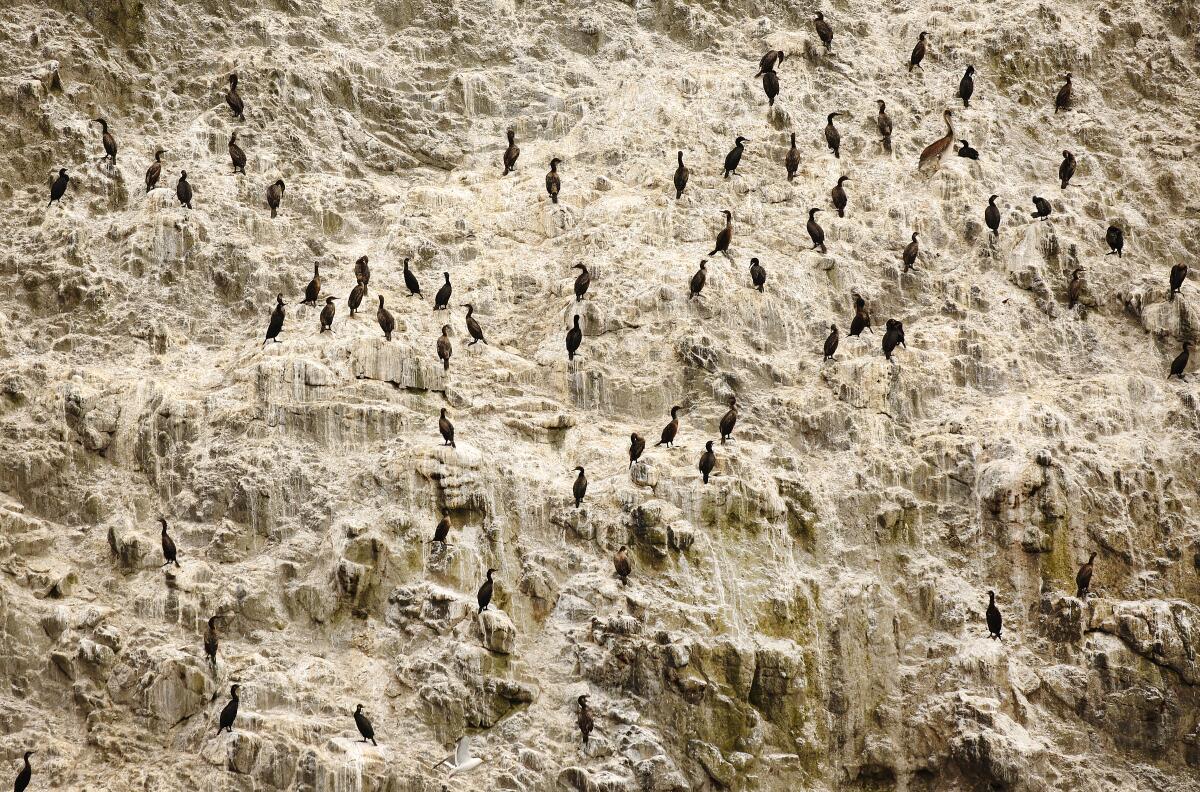
In that light, Guerra’s work could prove important for helping conservationists protect the delicate Channel Islands ecosystem, he said.
“For better or worse,” Waite said, “excessive levels of bird poop absolutely alter microbe, plant and animal species populations.”
Guerra says she still has years of work ahead of her before she can say with certainty how the sea gulls, and their junk food diets, are altering the islands. But already, she said her personal relationship with gulls had changed entirely.
“I’ll never look at them the same again,” she said. “They really are wild birds.”







